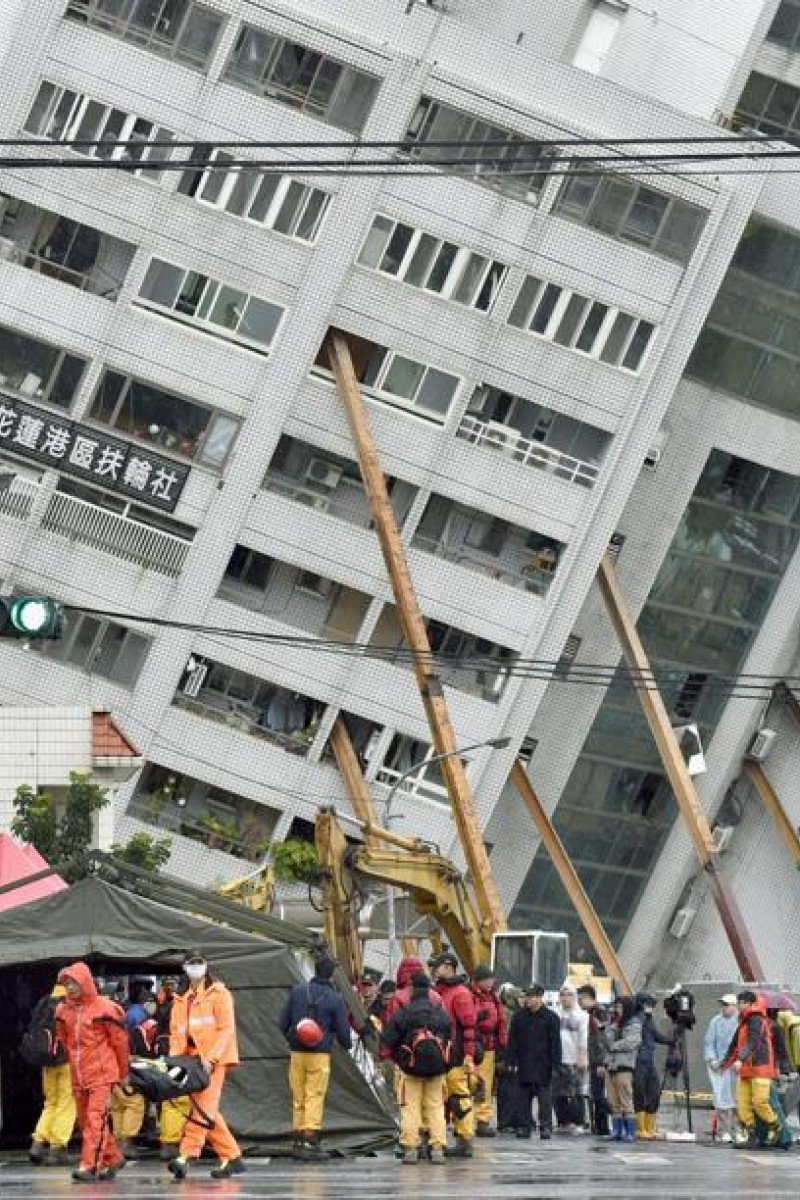
Second earthquake in Taiwan's popular tourist city of Hualien is slowing down relief efforts
More than 180 aftershocks have been recorded since the main quake on Tuesday and more than 60 people are still missing
 The earthquakes left this building at a dangerous angle.
The earthquakes left this building at a dangerous angle.Aftershocks are slowing down rescue efforts in Taiwan as emergency personnel combed through collapsed buildings in search of survivors after a powerful earthquake killed at least nine people near Taiwan’s popular tourist city of Hualien.
Nervous residents have endured more than 180 aftershocks since Tuesday, including a 5.7 quake late on Wednesday and smaller tremors early on Thursday.
The coastal city of Hualien was hit by a magnitude 6.4 quake just before midnight on Tuesday that killed at least 10 people and injured 265. Four buildings collapsed, officials said, and about 62 people were still missing.
It was initially feared as many as 150 people may have been missing in the rubble. The death toll had been put at seven overnight.
Many of the missing were believed to be trapped in a 12-storey residential building that was tilting at a 45-degree angle. Tenants and their furniture were flung across their apartments in the damaged building.
Hualien is home to about 100,000 people. Its streets were hammered by the force of the quake, with large cracks along major roads.
Taiwan lies near the junction of two tectonic plates and is prone to earthquakes. An earthquake with a magnitude of 6.1 struck nearby on Sunday.
More than 100 people were killed in a quake in southern Taiwan in 2016, and some Taiwanese remain scarred by a 7.6 magnitude quake that was felt across the island and killed more than 2,000 people in 1999.
